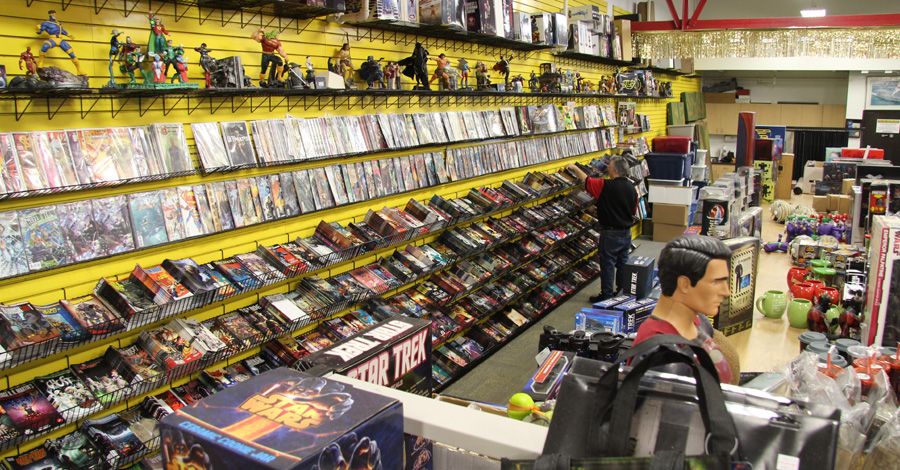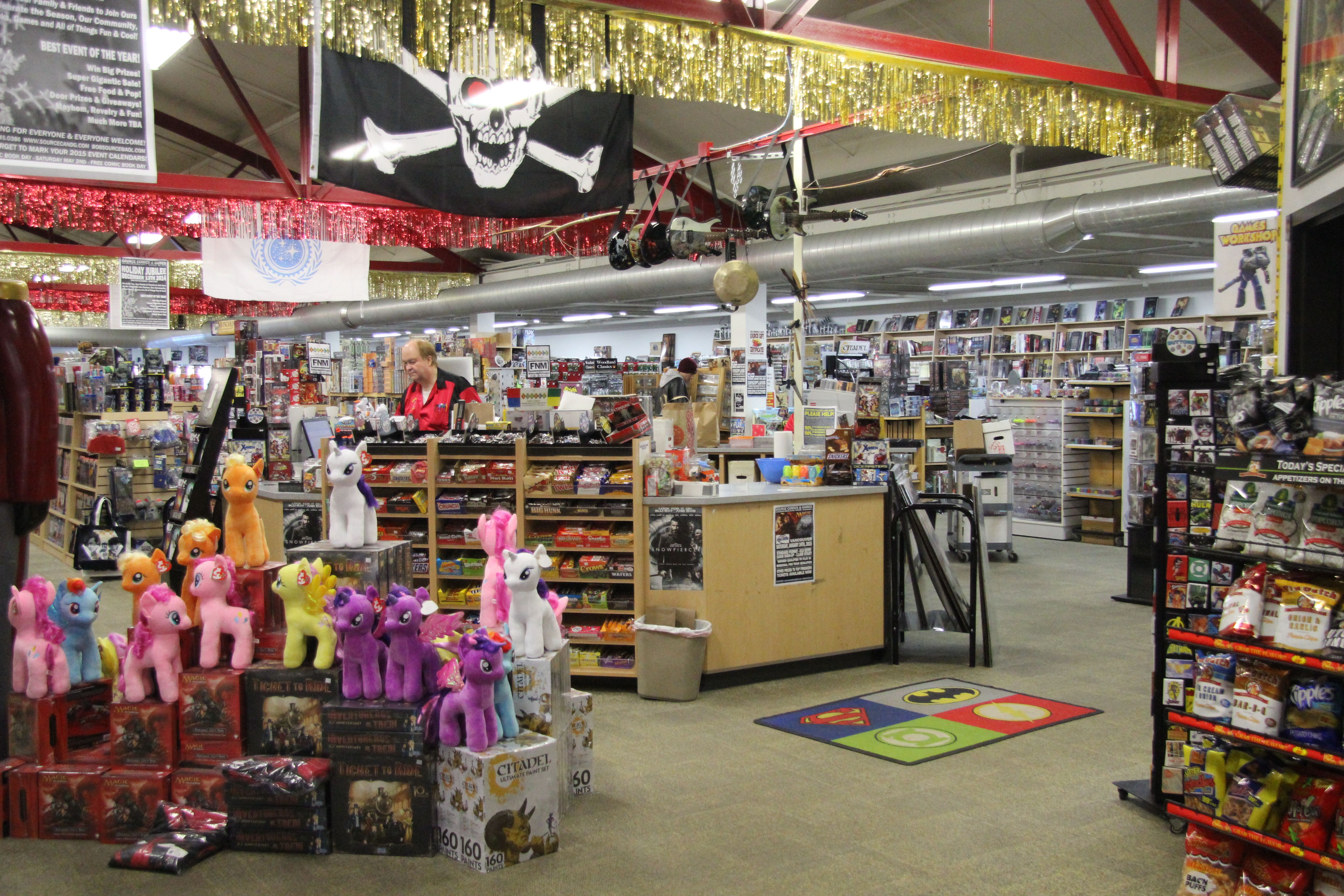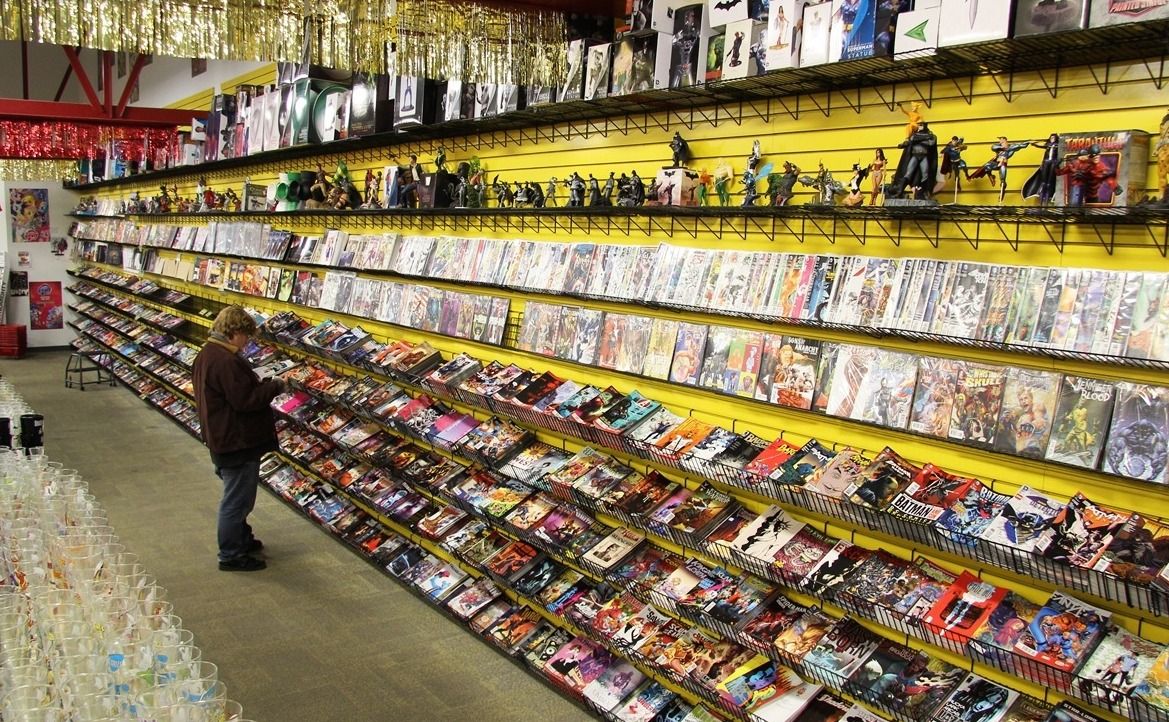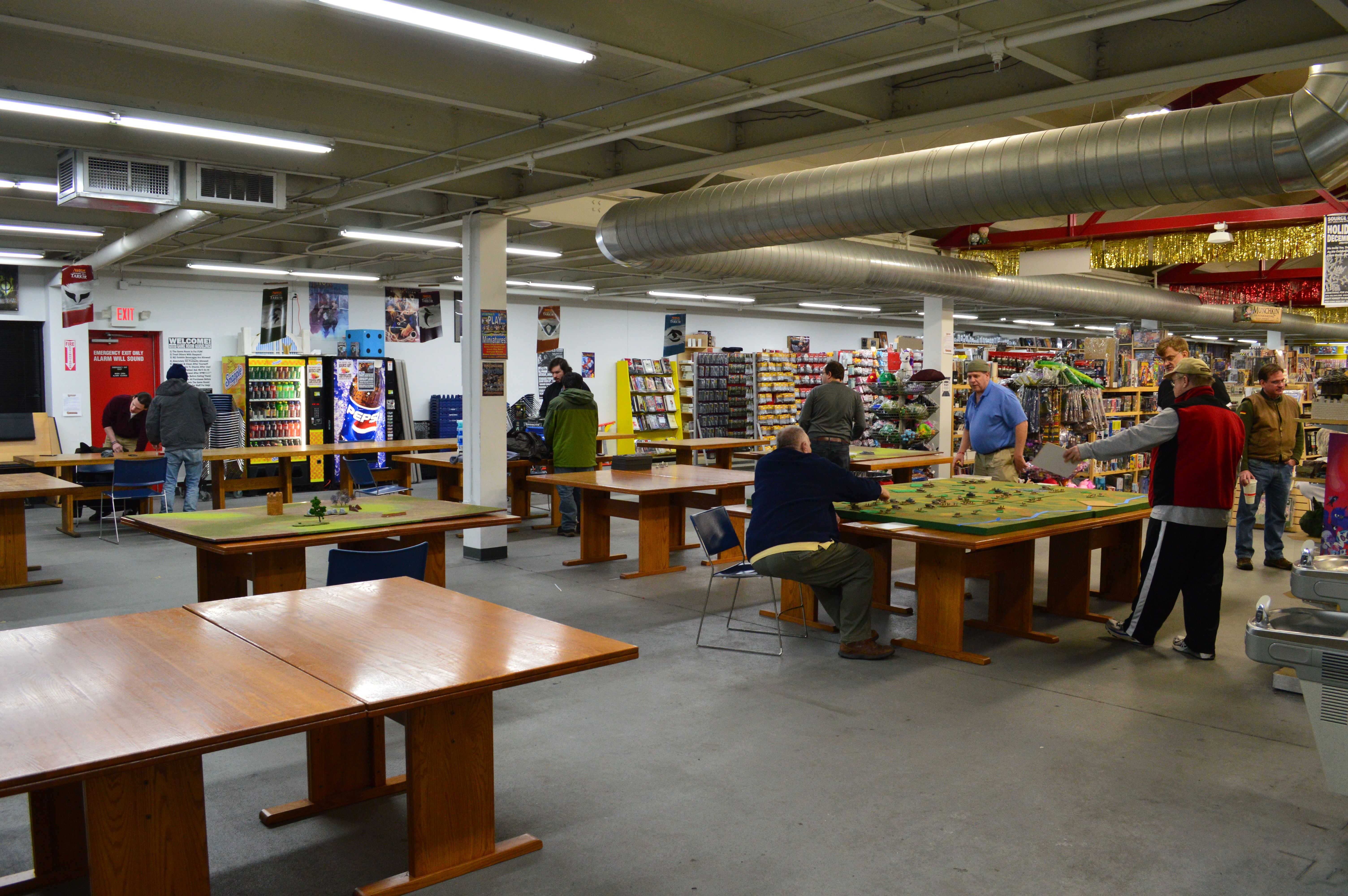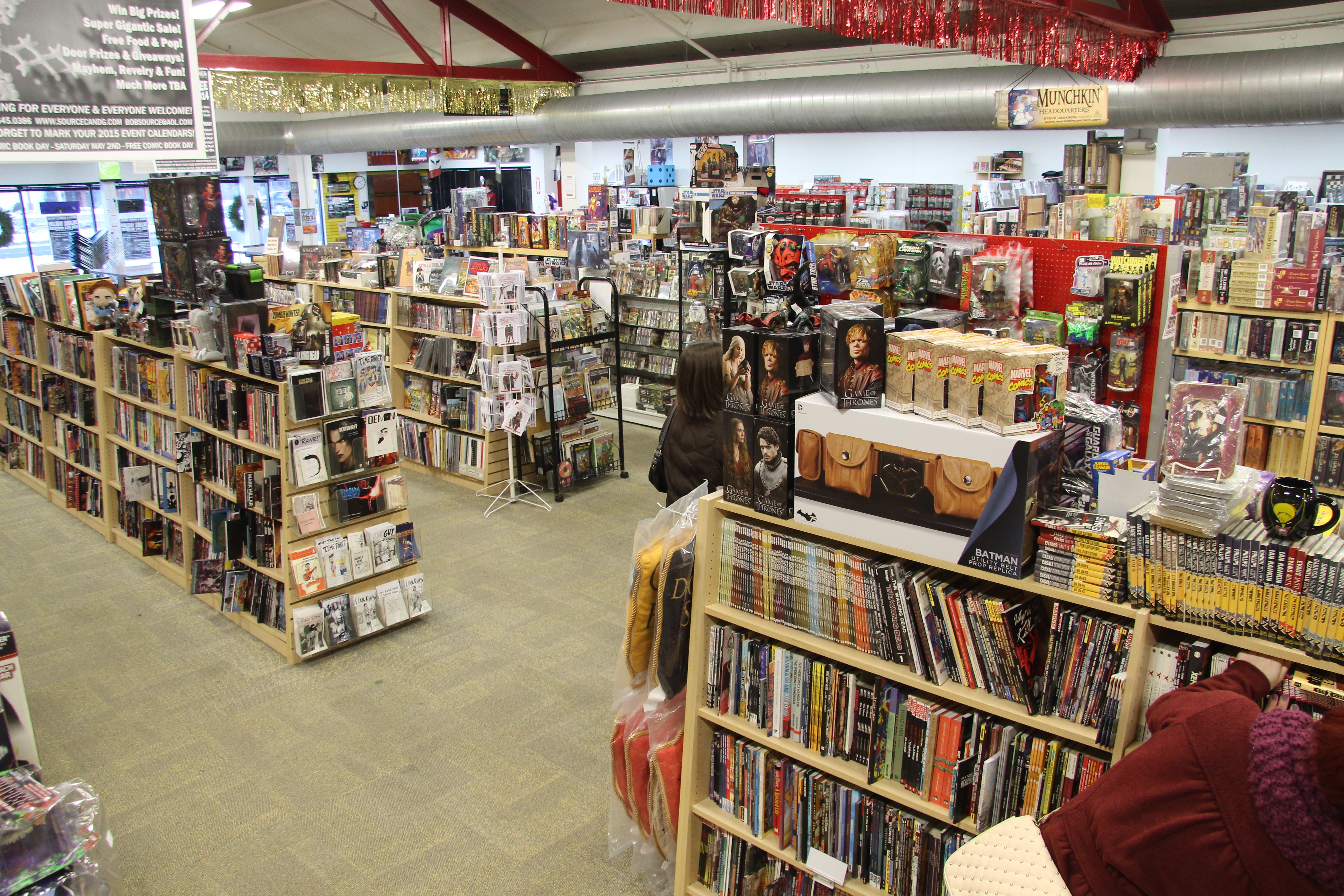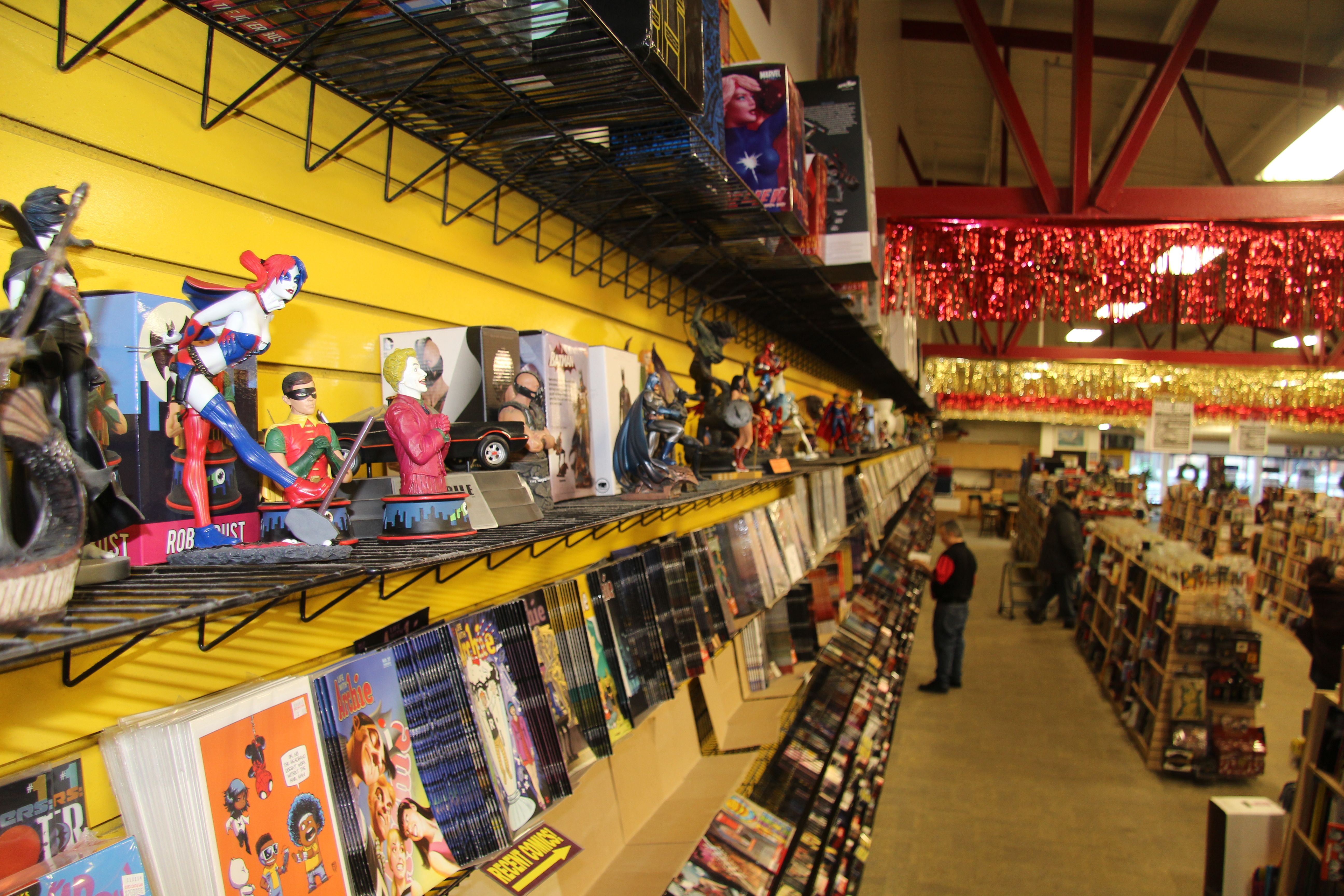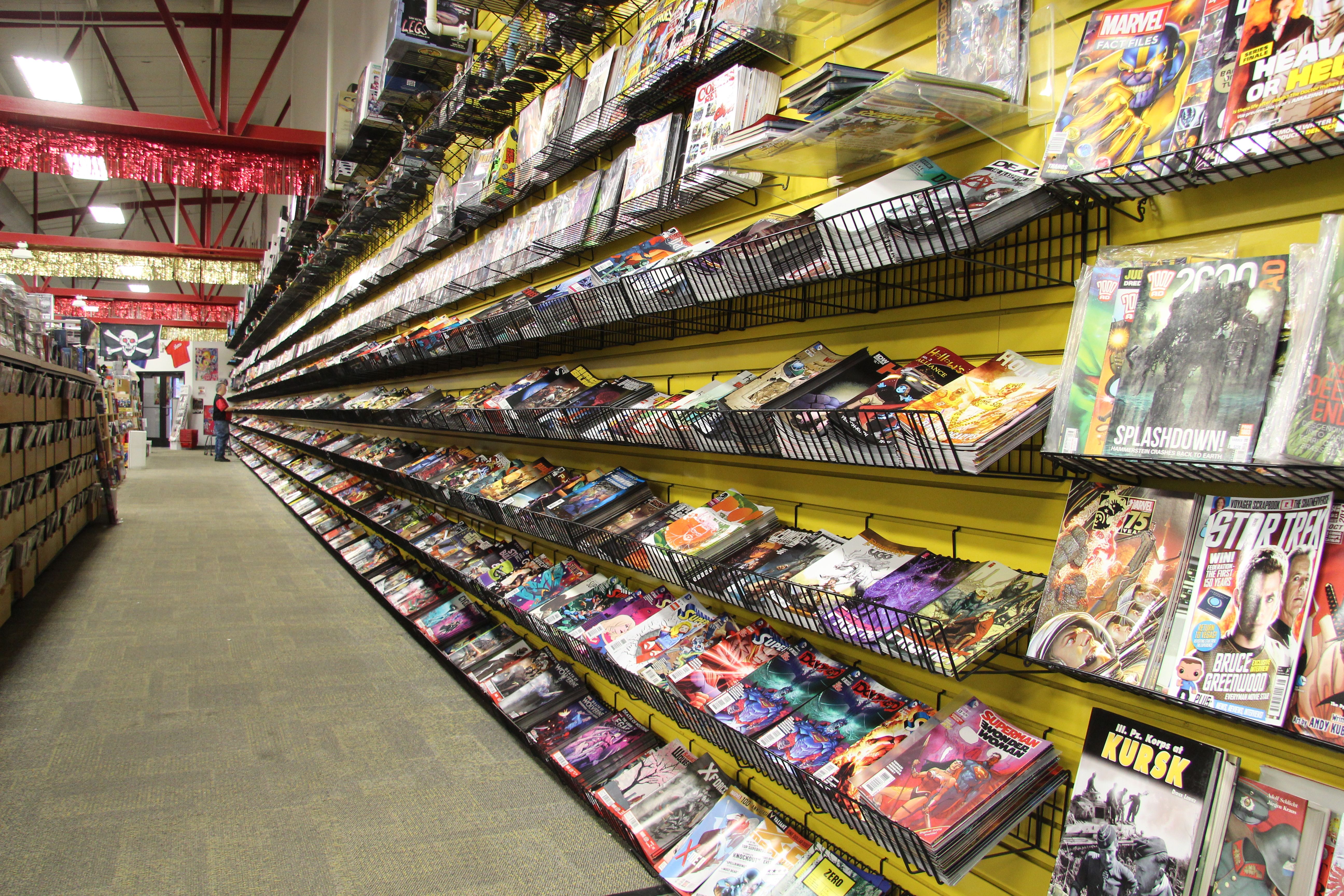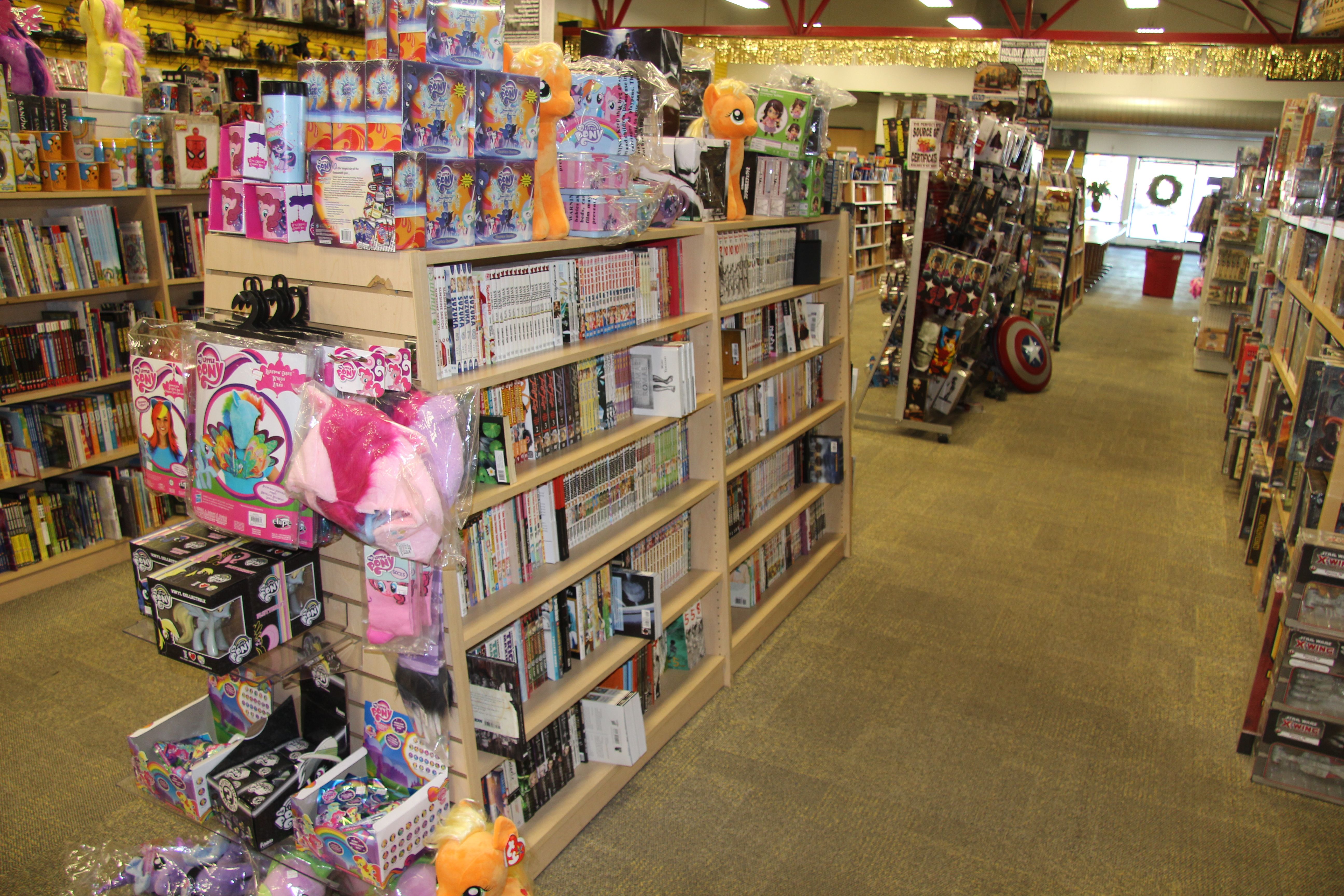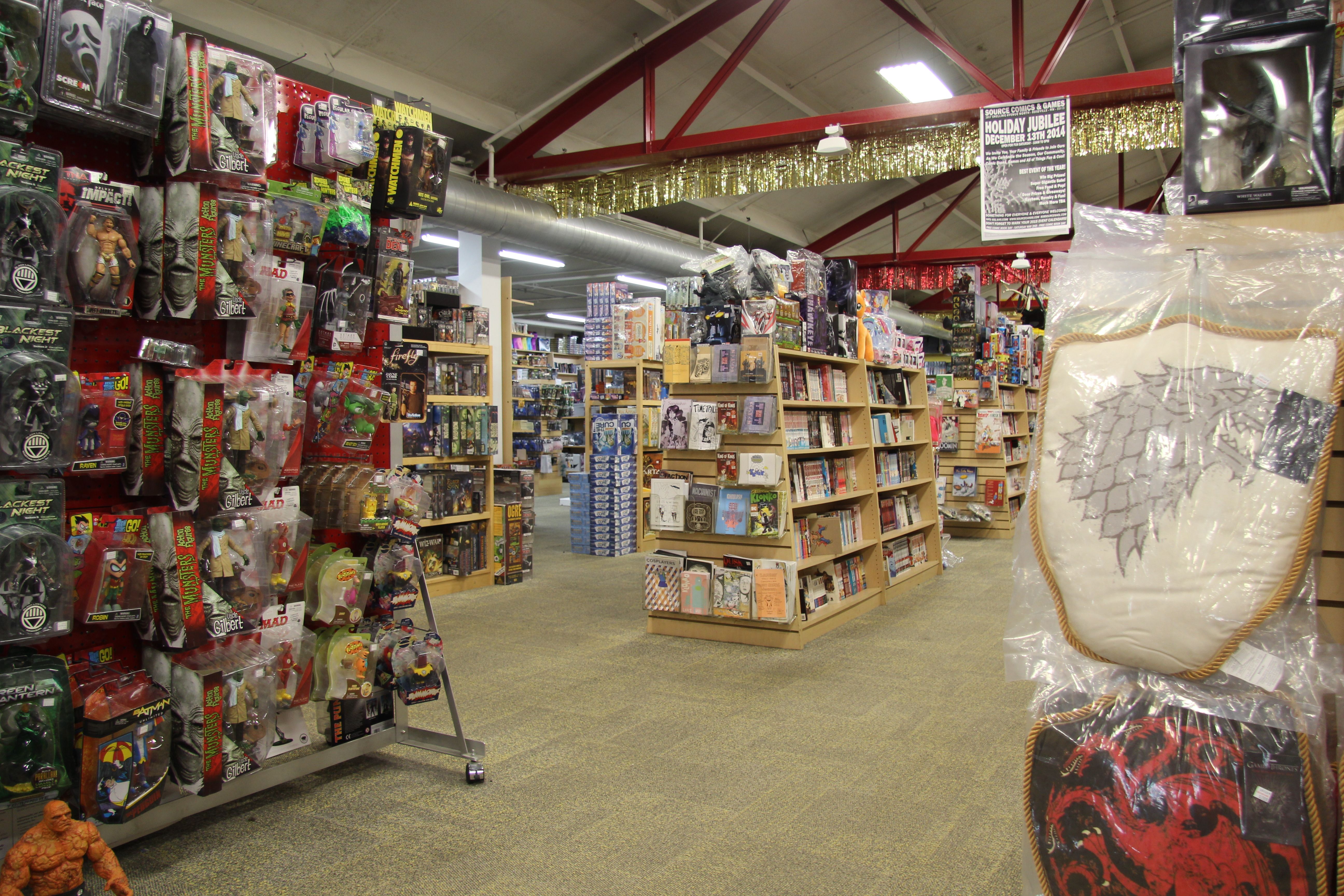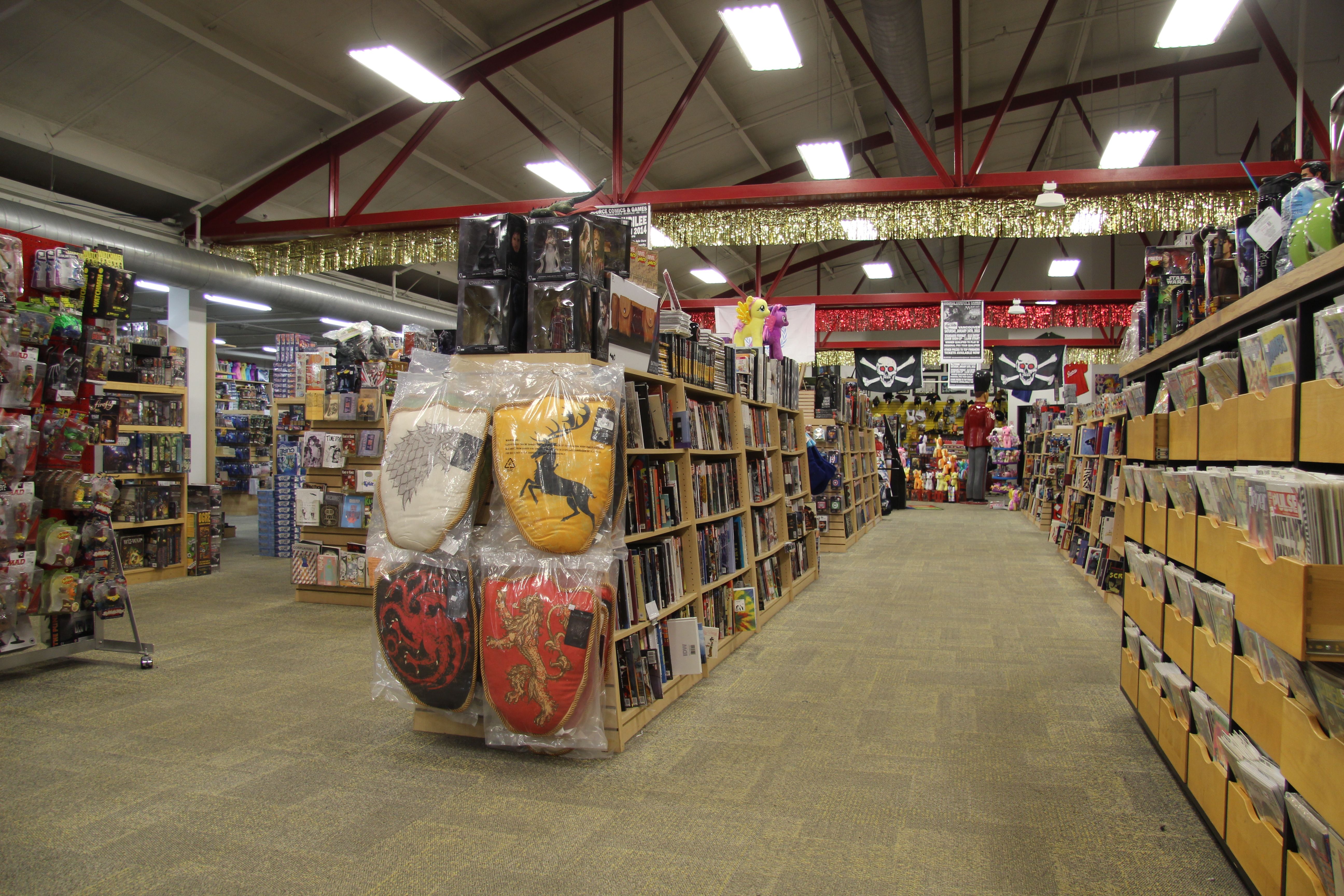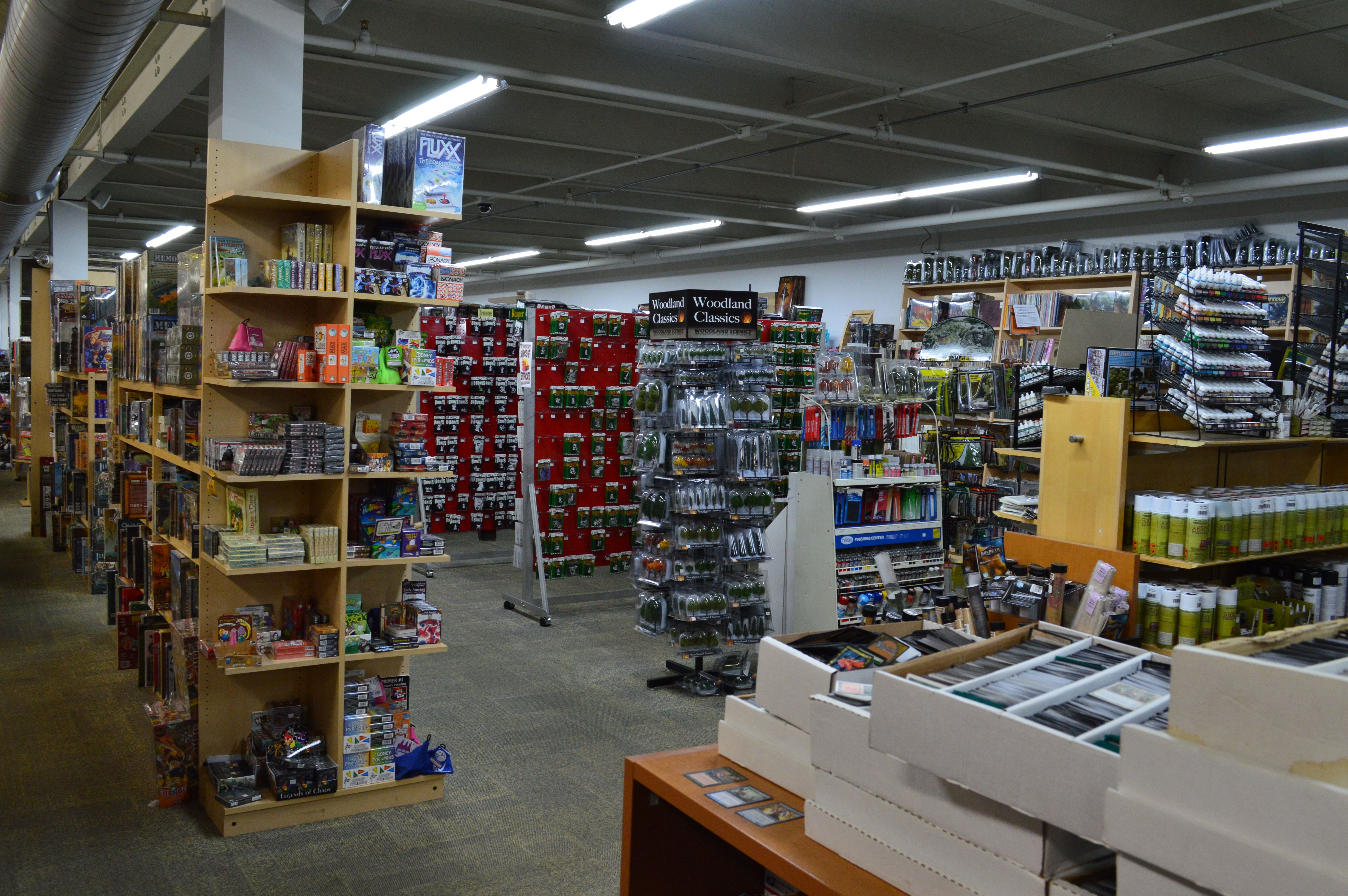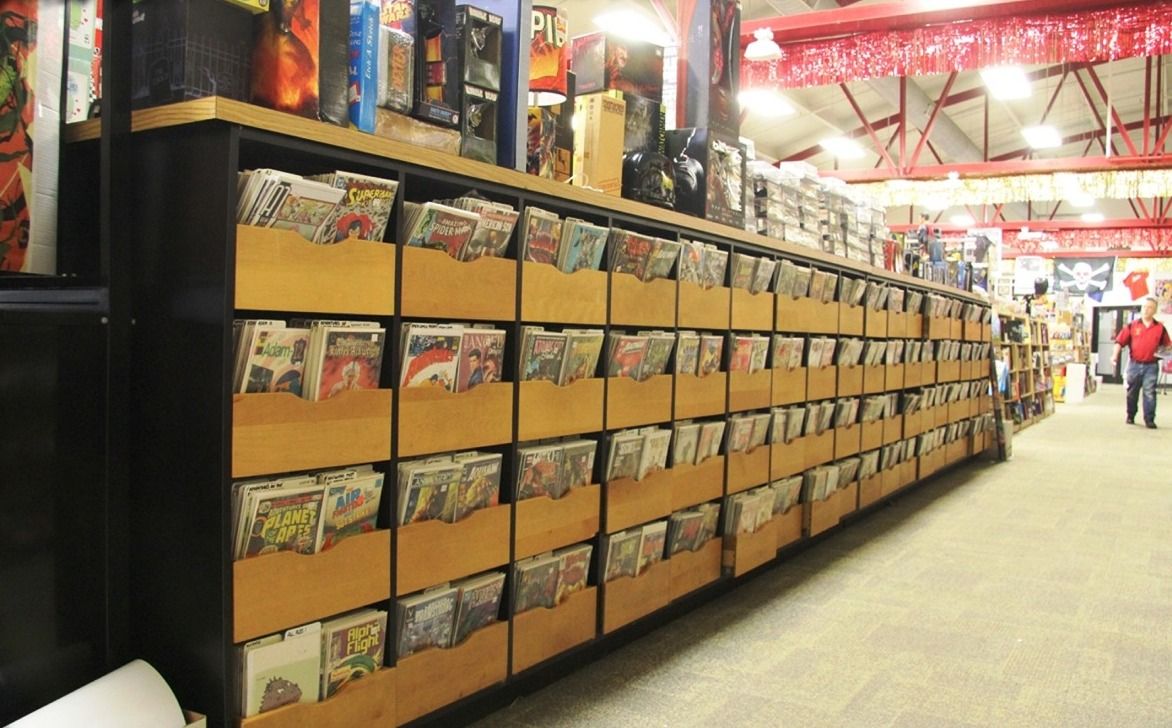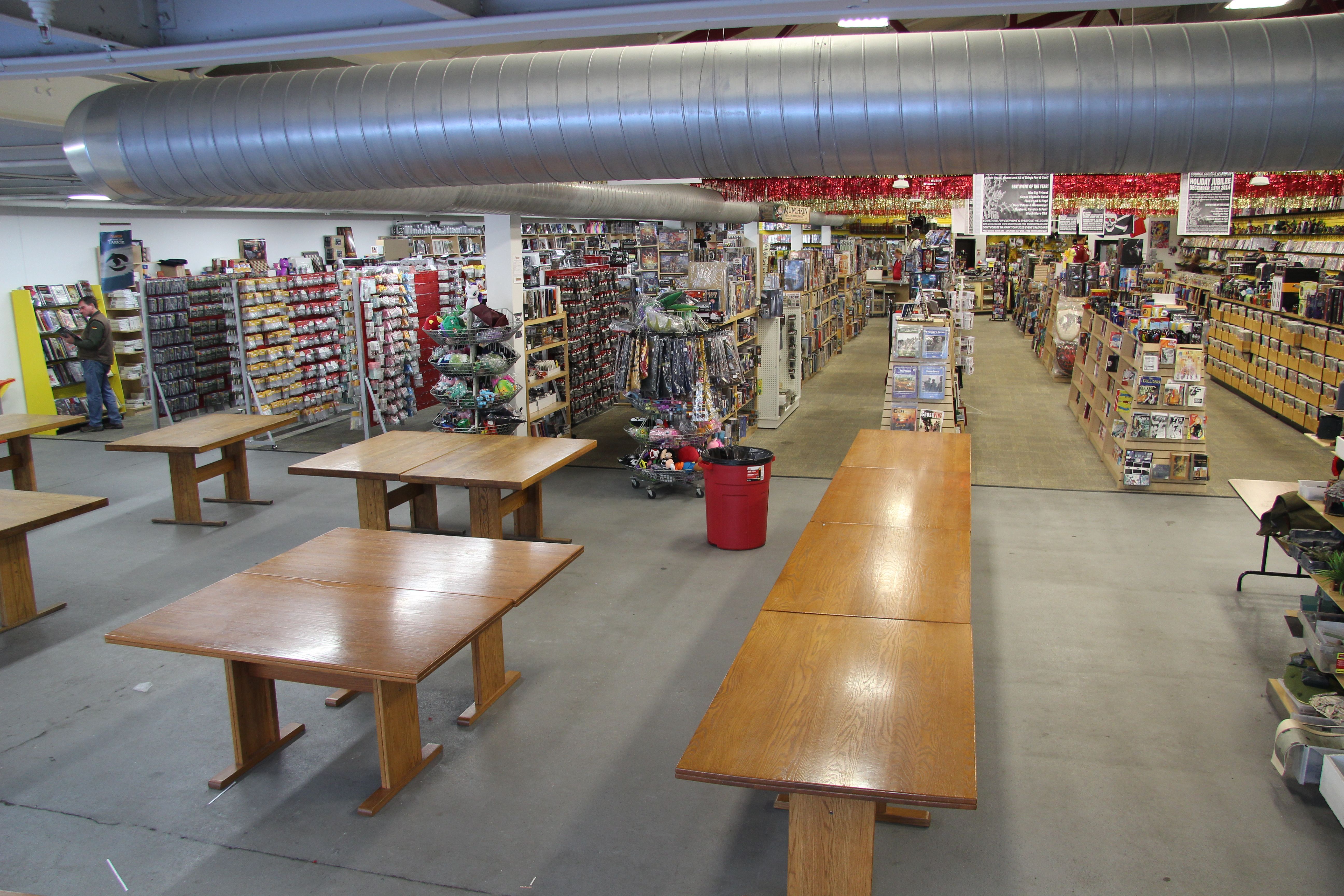Welcome to Store Tour, ROBOT 6’s weekly exploration of comics shops, and the people who run them. Each Sunday we feature a different store, and also get to know the person behind the register.
To discover a comic store in your area, visit FindAComicShop.com
This week’s store is Source Comics and Games, located at 2057 Snelling Ave. N in Roseville, Minnesota. We spoke with owner Bob Brynildson.
ROBOT 6: What's the secret origin of your store?
Bob Brynildson: We started out as Legacy Games in 1988, merged with Source Comics and Games in 1991; the original corporation went bankrupt 1992. My partner and I got it back and decided to keep the Source Comics and Games as the name; reopened in 1993. The location was selected on ease of travel, highways, apartment buildings and traffic on the streets in front of the store. Secondary reasons were the size of the building, parking lot and other businesses near us. Three years ago, we have moved to a new location that is far superior in all these categories.
Why did you decide to get into comics retailing?
At the time we needed a product line that would complement games. Comics filled the niche need nicely. The margin is better, the market is larger, there is a nice cross-market. Early on we decided to consider products on their entertainment value rather than by genre. My background is in customers, sales and management. Comics were a media form that really made sense for us.
Do you have a philosophy or strategy to retailing? Has it evolved from when you first started?
In the early days it was all about category killers. We did not just carry comics. We carried all of them (mostly). The idea was to never run out for two weeks and have at least two more for back issues. Now add lines of trade paperbacks, posters, T-shirts and novelties and we have a large amount of stuff going on. Back issues quickly became an issue. Now we are more diligent about products. The major market has much more impact on products and can be very tough to get right.
Tell me about the layout of your store. How did you work it out?
The store is divided into sections. When entering the store there is an open area that the cash wrap overlooks. On the customer's left are the comics along a wall, on the right starts the gaming sections. In front of the comic wall starts the trade paperback section and the back-issue display units. Action figure displays and history books divide the comics from the games. We used wide aisles for ease of movement and viewing space. The issues we face on display is how to set up new product and where do you put the older product. If not managed you will get clumps, dumps and piles of stuff. We used all pre-made fixtures and try to face out as much as we can. In the back of the store is the game area. This is a community space and has become more vital as we move forward into changing market types, genres and retail outlets. We have seen steady increase in traffic and sales now for the last three years.
What are your current bestsellers?
Best sellers: any Star Wars, Batman and Amazing Spider-Man. Favorites: Lumberjanes, Unbeatable Squirrel Girl, Oddly Normal, Harrow County and Paybacks. Those always do well, too, but we’re always introducing them to new people.
Marvel and DC's major events and small-run titles, new titles and multiple covers are a nightmare to order and do not make up for old-time sales or numbers. We are looking at a 6-percent increase in sales, but comics are down up to 20 percent. Thank goodness for Star Wars.
What is your customer base like? How has it changed over time?
Our customer base is more diverse now than ever, and it is growing and growing every week. We used to be 80 percent males between the ages of 20 and 50. Vertigo, Image and other great publishers have taken the lead on stories that attract a more diverse market. Social media, movies and TV shows have legitimized and expanded the entire market.
How do you reach out to new customers? How do you advertise?
I have been in business since 1993, so just time in service has done us well. For a long time I used TV advertising on a yearly basis, and that is good for maintenance of the market and getting the word out, but it reaches a very narrow group of people at a time. Our best efforts have been in large events such as Free Comic Book Day, Black Friday and Jubilees where our customers come in and get prizes, free food and soda and a good value on their favorite products. Now we focus on Twitter, Facebook, emails, email newsletter and 2 mass mailing a year. In store we have coupons, handouts, posters and banners. We have the Adventure Club Card 10 percent off for a year for $10.
How do you feel your online presence, such as your website and forum, and also Facebook and Twitter, supports or supplements your store?
It has a huge impact on market penetration and expansion. It is our primary go-to communication tool; it’s replaced all of our other advertising. The biggest impact besides that is the immediacy. We love to send out pictures and bits about what’s going on in the store or at a convention to give some of that to the people who can’t be there for all of those events.
What made you decide to sell on Amazon and eBay?
We use them for value and specialty items, to keep inventory levels under control and to draw from the much larger market than we have direct access to. And because of how many conventions we travel to we have people all over the country that come back every year to see us and like being able to order during the rest of the year. We have links right to the stores on our webpage.
Tell me about the events you do, like the Jubilees. How is it coordinating those?
We have four major in-store events a year: Black Friday, our Jubilee sales and Free Comic Book Day. These are so well attended that they require hiring a police officer for parking security. We have signings around four times a month, and sometimes more. We have a large game room with programming and space for customers to reserve for free every day. The website and other social media puts out the word. Coordination is difficult, but we split up a lot of the work and our employees love what they do.
Earlier you mentioned attending a convention. Which ones do you attend? How do you benefit from them?
We set up a booth in at least 10 local shows. On a national level we have seven booths at San Diego Comic-Con, five booths at DragonCon, 12 booths at Origins and 14 booths at GenCon. Huge benefits, both promotion and sales. We also try to send staff to as many other shows as possible. This year we had people at C2E2, NYCC, the Baltimore Retailer Summit, our outstanding local indie comics con called Autoptic, GAMA and ConSimWorld. We always want to be talking to our peers and seeing what new products and creators are out there.
What do you see as the biggest challenge in the comics industry today that particularly impacts your store?
Ordering. Everything is new, the numbering, the titles themselves. Multiple covers. Pull and holds. Customers have little or very late knowledge on what is coming out or what they might want. The customers in the know are confused on how to get product and how to get the various covers offered. It is crazy. Comics sales are starting to struggle because of all that.
And what is the industry's biggest asset that is helping you be successful?
Every Wednesday there are new comics. Movies and TV are great introductions and market awareness. The comic industry and small publishers have broadened the market to include new genres, women, characters and stories.
With all of the people that come through your store, I imagine you must have some great stories. What is the funniest or most memorable moment you've seen in your store?
There are many. We had a customer that was a pull and hold with us. Every Wednesday he would pick up his comics and spread them out on the counter, without looking at them. He then pulled out a silver dollar with one side damaged and one side whole, like Two-Face's coin. He would select a comic, flip the coin and if it was scarred face up he would put it back on the shelf. We always wondered how he ever finished a series. Then he went missing for about three months, and we thought that he had moved or quit comics. One day there he is, and he has three comics, approaches the cash register. We all kind of position ourselves to see the coin and which ones he was going to get. He looks up and says, "You know, a couple of months ago I was not in good mental health." We of course respond with "never noticed." He goes on, "You guys were a safe haven for me. You never made fun or made me feel that I was out of the ordinary. It helped me a lot." He bought all three comics, and to this day still comes in once in a while to get some more. He got the entire store to tears with that small comment, and it still does to me.
If you’d like to see your store featured here on Robot 6, email us.

